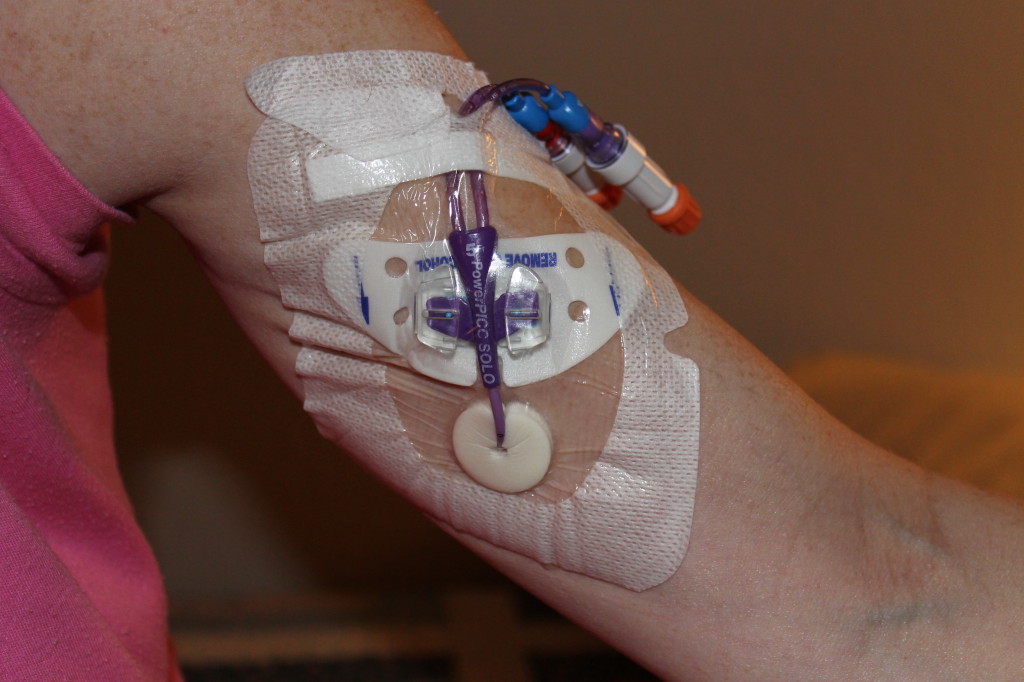This is one of the most common questions that patients have when they are told that they need home infusions. PICC is an acronym for a Peripherally Inserted Central Catheter, and it is, in essence, a long IV line. It is usually inserted in a smaller vein in the upper arm (peripheral), and terminates in a larger vein in the chest near the heart (central). “Catheter” is just another name for “tube” in the medical lexicon.

PICC lines are inserted by certified PICC specialists, who use ultrasound and X-ray images to ensure that the line is in the correct spot. PICC lines can have 1-3 lumens, which allow medications to be attached and flow through the line. Additionally, blood draws for lab purposes can also be extracted from the line. The one pictured has two lumens, which have orange “caps” to help keep the line sterile. Sometimes these caps are blue as well.
A PICC line is a safe, stable, and effective way to deliver IV medications. They can stay in the body for weeks or months, alleviating the need to subject your veins to the numerous needle sticks necessary if the PICC was not there. Additionally, some medications are caustic to the vasculature; PICC lines allow these medications to be delivered to larger vessels that are less likely to be damaged. PICC lines are thus a very versitile choice for patients requiring long-term venous access for conditions such as nutritional deficiencies or IV antibiotics.
Infection is always a risk with intravenous access, but reported rates of PICC line infections are low if proper maintenance protocols are followed. Our team of skilled nurses teach and train patients the basics of sterile technique and how to properly care for the line. The lines need to be flushed at regular intervals, and the dressing needs to be changed weekly by our team.
Please take a look at our videos for more information on PICC lines and their care.

